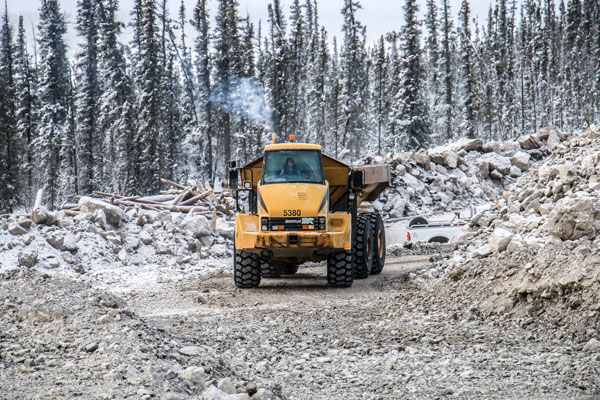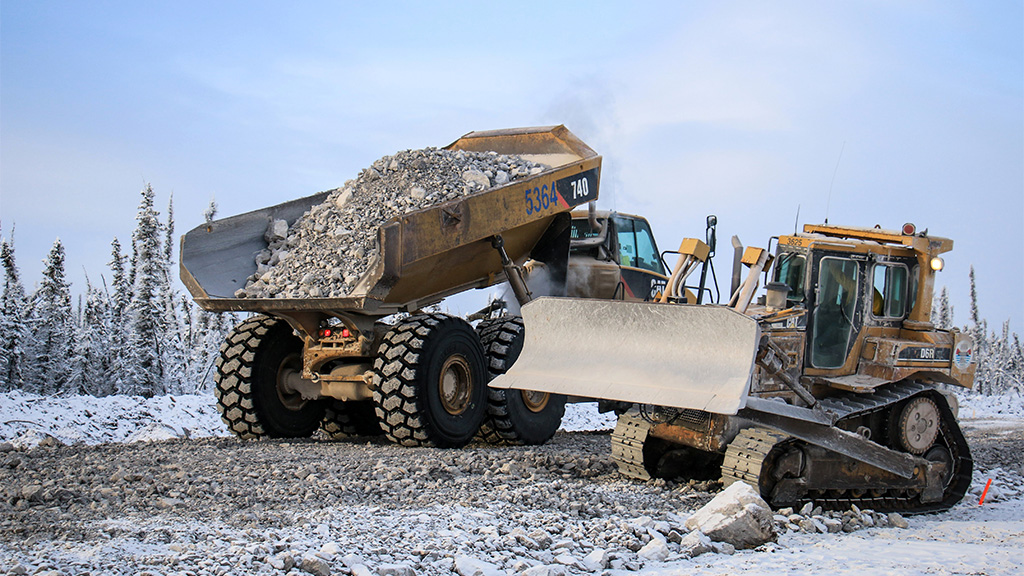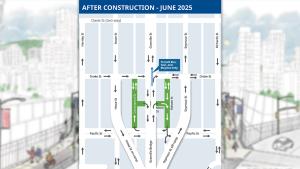In the 1880s, Canada helped establish its sovereignty across 5,000 kilometres of land by building the Canadian Pacific Railroad.
Its construction enabled transportation from the Atlantic to Pacific oceans, the settling of new cities and towns, a unified economy and brought to life Canada’s motto “From Sea to Sea.”
Nearly 130 years later, the governments of Canada and the Northwest Territories are picking up where the railroad left off with construction of the Mackenzie Valley Highway. When fully completed it will be the first road to connect Canadian public highways to the Arctic Ocean.
“There are many driving factors, among them to further assert Canadian sovereignty in the North and connecting previously isolated communities to the national transportation network through an all-season access route,” said Seth Bohnet, director of strategic infrastructure with the Northwest Territories, in an interview.
“Most of those communities out there are isolated year-round and only accessible by air, water or seasonal ice roads. That causes a lot of challenges in terms of supply, logistics, feelings of isolation and the cost of living is high.”
Other benefits include economic diversification, increased tourism, small business potential and promoting further development and exploration of the natural resource-rich region, he said.
The vision for the Mackenzie Highway as a means of connecting Canada “from coast to coast to coast,” dates back roughly five decades, according to the N.W.T’s business case for the project.
In 1977, due to several factors including a 10-year moratorium on northern oil and gas development, the highway’s construction was paused in Wrigley, N.W.T, its northern terminus to this day.
“The long-promised road to resources is needed now,” reads the case.

The current section of the Mackenzie Valley Highway project being worked on is a $700-million, 321 kmilometre-long all-season gravel road stretching from Wrigley north toward Norman Wells, N.W.T.
Sections of the larger Mackenzie Valley Highway have already been built, such as the Inuvik to Tuktoyaktuk Highway which opened in 2017, was the first road ever to reach the shores of the Arctic Ocean and an integral part of the long-term vision for the highway, said Bohnet.
But heading north, public highways end in Wrigley, many hundreds of kilometres south of Inuvik. The project is undergoing an extensive environmental assessment before work on the Wrigley to Norman Wells section can begin.
Connecting Norman Wells to Inuvik is still many years away. That potential future section of the highway is currently subject to a feasibility study with no hard timeline attached, said Bohnet.
But the Government of the Northwest Territories outlines total completion of the Mackenzie Valley Highway, from Wrigley to Tuktoyaktuk, as a goal in its 25-year transportation strategy Connecting Us.
Bohnet said the infrastructure team is going on year five of the environmental assessment and investing most of its time in social, economic and technical design planning to inform the assessment.
But there are boots on the ground.

“We’ve advanced some smaller projects along the alignment as capacity building projects for the communities,” he said.
“These advance outside of the environmental assessment with their own project approvals, regulatory approvals and community support. The intent being to prepare the communities for the larger project when it does come.”
So far, Canyon Creek access road has been completed, a 14-kilometre-long segment immediately south of Norman Wells. In November, construction began on the Prohibition Creek access road, also south of Norman Wells.
The Great Bear River Bridge adjacent to Tulita is in planning and design with regulatory applications anticipated to be submitted this year.
Bohnet said building a gravel road is a product of cost consideration.
“To invest in paving, you start running into a lot more maintenance costs associated with upheaval and permafrost. It’s a lot harder to maintain in the long run,” he said.
The largest problems associated with construction of such a long highway through relatively untouched lands are mitigating environmental impacts and working laterally with multiple levels of government and many remote communities.
“There’s a big chunk of engagement and collaboration that needs to take place with Indigenous governments and community organizations to ensure that we not only identify all of the potential impacts but that we find opportunities to maximize benefits for them and minimize any negative impacts.”
Minimizing environmental impacts means strategically determining what time of year construction can take place.
“Project delivery plans would entail trying to place as much of the foundational material during the winter season to minimize any degradation of permafrost in the summer season,” he said.
“Travelling on the open tundra and working in an area that is currently not frozen means you have a bigger environmental footprint” in the summer months.
Logistics is also a challenge for the geographically isolated project.
“It’s making sure we have materials available onsite and on location,” he said. “Typically, there’s no way to stage them other than either accessing via the winter road or the river system.”
Bohnet said the project is still at least two years away from receiving the go ahead from regulatory bodies for the Wrigley to Norman Wells section. Funding has only been secured for the completion of the environmental assessment and not for construction.
Follow the author on Twitter @JOC_Evan.











There is already a Canadian public highway connection to the Arctic Ocean via the Dempster Highway in the Yukon (to Inuvik) and then on to the Arctic Ocean via the Inuvik to Tuk highway. Nevertheless the completion of the Mackenzie Valley Highway is essential to connect western NWT communities north and south.